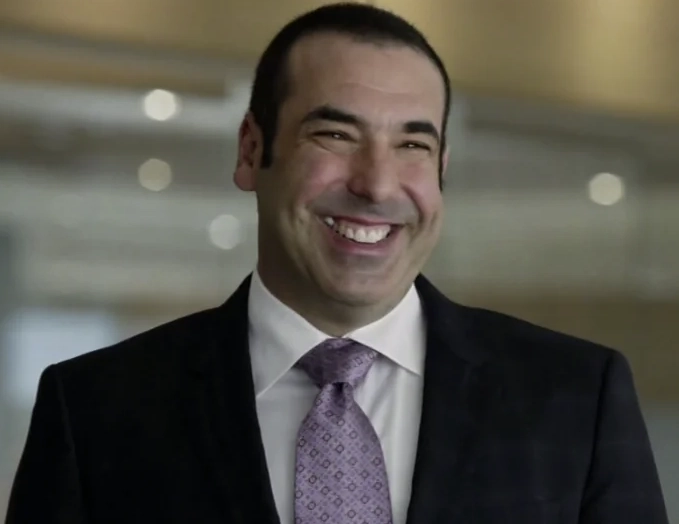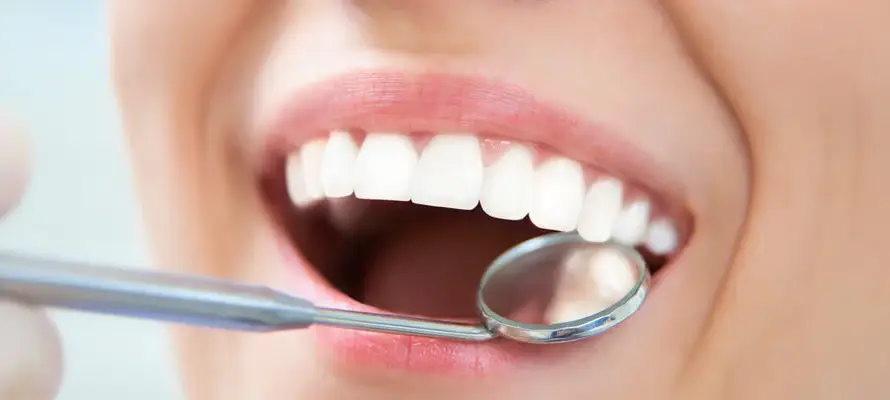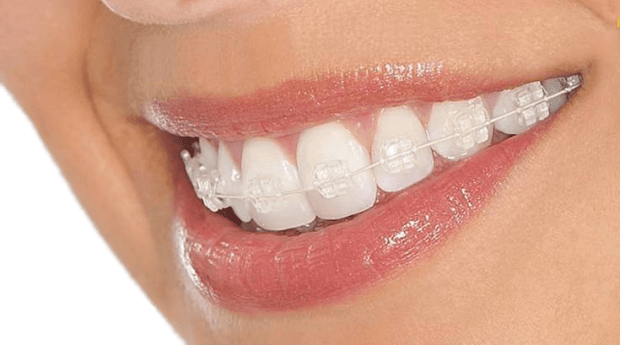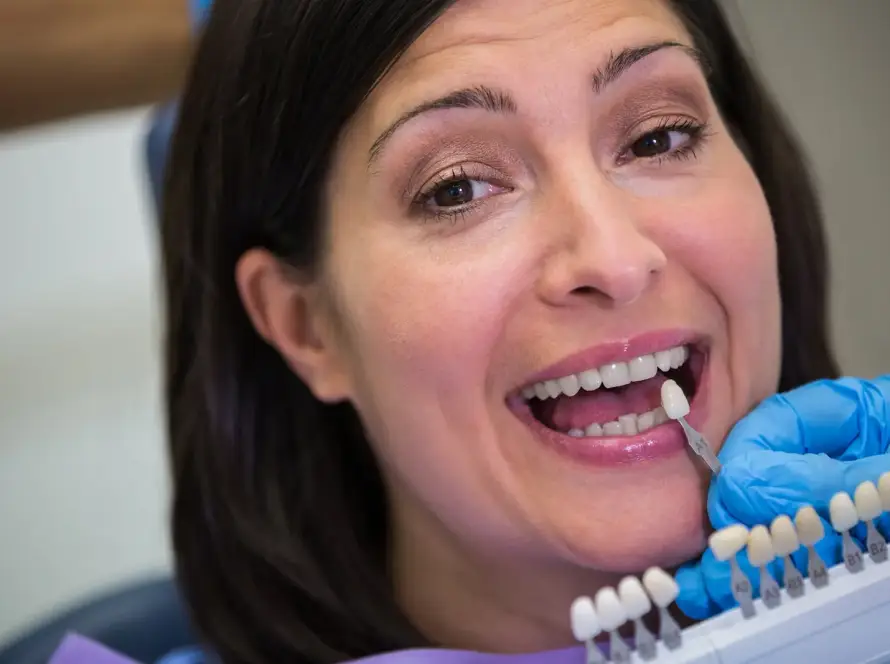Alveolitis (Dry Socket)
Alveolitis, commonly referred to as dry socket, is a painful condition that can occur after a tooth extraction. This condition arises when the blood clot that normally forms at the site of the extraction either dissolves or becomes dislodged, leaving the underlying bone and nerves exposed. This exposure leads to severe pain and delays the healing process.
Dry socket typically develops within three to five days after the tooth extraction procedure. It is essential to identify and understand the risk factors, symptoms, and preventative measures associated with alveolitis to facilitate prompt and effective treatment.
Causes
The exact cause of dry socket is not always clear, but several factors can contribute to its occurrence:
- Trauma during extraction: Excessive force applied during the tooth removal can disturb the blood clot.
- Smoking: Nicotine reduces blood supply to the affected area, hindering the formation of a stable blood clot.
- Oral bacteria: Infection or a high presence of harmful bacteria in the mouth can lead to the premature breakdown of the clot.
- Certain medications: Drugs that impede blood clotting, like oral contraceptives or anticoagulants, increase the risk.
- Improper aftercare: Failure to follow post-operative care instructions can disrupt the clot.
Symptoms
Recognizing the symptoms of dry socket is crucial for timely intervention:
- Severe pain: Intense throbbing starting a few days after extraction, radiating to the ear, eye, temple, or neck.
- Visible bone: A noticeable empty socket with exposed bone at the site of extraction.
- Bad breath: Foul odor or unpleasant taste in the mouth.
- Swelling and discomfort: Surrounding gums may be swollen and tender.
Risk Factors
Individuals with the following characteristics are at a higher risk:
- Prior history of dry socket: Having experienced dry socket previously increases the likelihood.
- Poor oral hygiene: Lack of proper dental care can heighten the risk.
- Chronic conditions: Conditions like diabetes can impede healing.
- Gender: Women, particularly those using oral contraceptives, may be more susceptible due to hormonal fluctuations affecting blood flow.
Understanding the conditions and factors contributing to alveolitis helps in preemptive measures and managing expectations for post-extraction recovery.
Causes of Alveolitis After Tooth Extraction
Alveolitis, commonly referred to as dry socket, is a painful dental condition that can occur following the extraction of a tooth. It mainly arises due to the dislodgement or failure of the blood clot that forms in the empty tooth socket during the healing process. The causes of alveolitis after tooth extraction can be attributed to several factors:
- Inadequate Blood Clot Formation
A vital step in the healing process is the formation of a blood clot at the site of extraction. If a blood clot fails to form or is partial, the bone and nerves in the extraction site become exposed, leading to dry socket. - Premature Blood Clot Dislodgement
The dislodgement of the blood clot can occur due to vigorous rinsing, spitting, or suction actions, such as drinking through a straw or smoking. These actions create negative pressure in the mouth that can dislodge the clot. - Smoking and Tobacco Use
The chemicals in cigarettes and other tobacco products can impede blood flow and healing in the mouth, increasing the risk of dry socket. - Oral Bacterial Infection
An infection in the mouth can interfere with the blood clot forming properly. Poor oral hygiene practices or pre-existing gum diseases can exacerbate this risk. - Trauma at Extraction Site
Excessive trauma during the tooth extraction procedure can be a contributing factor. Difficult extractions or surgical extractions that involve more manipulation of the gum tissue and bone can delay healing. - Hormonal Influences
Changes in hormonal levels, especially in women taking oral contraceptives or during menstrual cycles, might increase susceptibility to dry socket. Estrogen is believed to affect the normal healing process. - Previous Episodes of Dry Socket
If a patient has experienced dry socket in the past, they may be at a higher risk of having it occur again with subsequent tooth extractions.
Risk Factors for Developing Dry Socket
The occurrence of dry socket after a tooth extraction can be influenced by a variety of risk factors. While some are related to the individual’s overall health, others are linked to the specifics of the dental procedure. Understanding these risk factors can help healthcare professionals implement preventive measures and guide patient education.
Smoking and Tobacco Use
- Nicotine constricts blood vessels, reducing blood flow to the extraction site.
- The act of sucking on a cigarette can dislodge the blood clot.
- Tobacco use introduces harmful chemicals that impair healing.
Oral Hygiene Practices
- Poor oral hygiene can increase the risk of infection.
- Not following post-operative care instructions can lead to complications.
- Vigorous rinsing or spitting can disrupt the clot formation.
Oral Contraceptive Use
- High estrogen levels can affect the healing process.
- Studies suggest that women on birth control pills are at a higher risk.
Previous Dry Socket Incidence
- Individuals who have experienced dry socket before are more likely to develop it again.
- The history of dry socket may indicate a predisposition to poor healing.
Age and Gender
- Adults between the ages of 20 and 40 are more frequently affected.
- Women, especially those using oral contraceptives, are at a higher risk.
Tooth Extraction Specifics
- Extraction of impacted lower third molars (wisdom teeth).
- Complex or prolonged surgical extractions.
- Increased trauma during the procedure.
Existing Health Conditions
- Diabetes and other systemic conditions can impair healing.
- Immune-related conditions may slow down the body’s recovery process.
Medication Interference
- Certain medications, such as steroids, can delay healing.
- Blood thinners may complicate clot formation.
Pre-Existing Infections
- Oral infections at the time of extraction can increase dry socket risk.
- Presence of bacteria can impede proper clot formation and healing.
Professionals must assess these risk factors during pre-operative consultations to develop a targeted preventive strategy and mitigate the likelihood of developing dry socket following tooth extraction.
Recognizing the Symptoms of Alveolitis
Alveolitis, commonly known as dry socket, can cause significant discomfort after a tooth extraction. Identifying the symptoms early is essential for timely intervention and effective treatment. Healthcare providers and patients should be aware of the following symptoms to recognize alveolitis:
Persistent Pain
- Location and Intensity: Pain typically begins within three to five days post-extraction and can radiate from the extraction site to the ear, eye, temple, or neck on the same side.
- Characteristics: Described as throbbing or severe pain unrelieved by over-the-counter pain medications.
Visible Bone within the Socket
- Absent Blood Clot: One of the key indicators is the absence of the blood clot at the extraction site, exposing the underlying bone.
- Appearance: The bone may appear white or yellowish and can be seen directly upon examination.
Foul Odor and Unpleasant Taste
- Oral Symptoms: A bad smell or taste in the mouth frequently accompanies dry socket. This is due to food debris and bacteria collecting in the open wound.
Swelling and Inflammation
- Localized Swelling: Some patients may experience localized swelling around the affected area. This inflammation is usually mild to moderate.
- Gum Redness: This can also be accompanied by redness around the socket, indicating inflammation.
Lymph Node Swelling
- Neck and Jaw: Swelling of the lymph nodes beneath the jaw or in the neck can occur in response to the infection or inflammation in the socket.
Fever and Malaise
- Systemic Symptoms: Though less common, some individuals may develop a low-grade fever and feel generally unwell. This typically suggests secondary infection.
Summary of Symptoms
- Persistent, throbbing pain beginning three to five days after extraction.
- Absence of a blood clot, with visible bone in the socket.
- Foul odor and bad taste in the mouth.
- Mild to moderate swelling and redness around the socket.
- Swelling of lymph nodes in the neck or jaw.
- Possible low-grade fever and malaise.
Recognizing these symptoms early can prompt immediate professional care, improving healing outcomes and reducing patient discomfort. Healthcare providers should educate patients about these signs to ensure timely identification and intervention.
Diagnosis of Dry Socket: What to Expect
The diagnosis of dry socket, or alveolar osteitis, after tooth extraction involves a detailed clinical examination and patient history. Dentists evaluate several factors to determine the presence of this painful condition.
Symptoms Assessment:
- Pain: Severe and radiating pain usually develops within a few days after tooth extraction.
- Empty Socket: Visual inspection reveals an empty socket devoid of a blood clot.
- Bad Breath or Unpleasant Taste: Patients often complain of halitosis or a foul taste.
Clinical Examination:
- Visual Inspection:
- Absence of Blood Clot: The socket appears empty and may expose underlying bone.
- Inflammation: Surrounding soft tissues might display signs of redness and swelling.
- Palpation: Careful probing of the area helps to assess tenderness and inflammation.
Diagnostic Imaging:
- X-rays:
- Rule Out Other Conditions: Radiographs help eliminate other potential causes of pain, such as bone infection or remaining root fragments.
- Verify Socket Condition: X-rays provide a visual confirmation of the socket’s state.
Patient History Review:
- Recent Extractions: Information about the recent dental procedure, including the date and any complications during extraction.
- Pain Onset and Progression: Details on when the pain started and how it has changed over time.
- Medications and Health Conditions: Any medications taken and pre-existing health conditions that might affect healing.
Comparison with Normal Healing:
- Healing Timeline:
- Normal Healing: Typically, pain diminishes within 48-72 hours post-extraction.
- Dry Socket: Increasing pain substantially beyond the normal healing timeframe.
- Identifying Risk Factors:
- Smoking: Reduces blood flow to the healing area.
- Oral Contraceptives: Higher estrogen levels can interfere with clot formation.
- Poor Oral Hygiene: Increases the risk of developing an infection.
Patient Communication:
- Explaining the Condition:
- Description: Explanation about dry socket and how it disrupts normal healing.
- Pain Management: Discussing available pain relief options and care instructions.
- Follow-up Appointments: Scheduling subsequent visits to monitor healing progress and provide further treatment if necessary.
By conducting a thorough diagnosis, involving a combination of symptom assessment, clinical examination, imaging, and patient history, dentists can effectively identify dry socket and implement suitable treatment strategies.
Immediate Steps to Take If You Suspect Dry Socket
If dry socket is suspected following a tooth extraction, immediate steps should be taken to manage pain and prevent further complications. Professional consultation with a dentist or oral surgeon is critical. Below are essential steps to consider:
Contact the Dental Professional
- Immediate Communication: Reach out to the dental professional who performed the extraction.
- Detailed Description: Provide a detailed report of symptoms such as severe pain, a visible empty socket, and unpleasant taste or smell.
Pain Management
- Over-the-Counter Pain Relief: Use analgesics like ibuprofen or acetaminophen as directed on the packaging or by a healthcare provider.
- Cold Compress: Apply a cold compress to the outside of the face near the extraction site to reduce swelling and numb pain.
Oral Hygiene Practices
- Rinse Gently: Use a mild saltwater solution to rinse the mouth gently, avoiding vigorous swishing to prevent dislodging any formed blood clots.
- Avoid Certain Activities: Steer clear of activities like smoking, drinking through a straw, or eating hard foods that could aggravate the condition.
Hydration and Diet
- Hydrate Adequately: Drink plenty of water to maintain hydration, but avoid carbonated, caffeinated, and alcoholic beverages.
- Soft Foods: Consume soft, nutrient-rich foods until professional care is received. Examples include yogurt, applesauce, and mashed potatoes.
Monitoring and Reporting
- Track Symptoms: Keep a record of pain levels, changes, and any new symptoms to share with the dental professional.
- Observe Progress: Note any signs of improvement or further deterioration, as this information can be crucial for diagnosis and treatment planning.
Follow Professional Instructions
- Adhere to Prescriptions: If prescribed medication or a special mouth rinse, follow the dosage and usage instructions precisely.
- Scheduled Visits: Attend all follow-up appointments to ensure proper healing and management of the condition.
By taking these steps, individuals can mitigate the discomfort associated with dry socket and receive appropriate care promptly.
Effective Treatments for Alveolitis
The management of alveolitis, commonly known as dry socket, involves various treatment strategies aimed at alleviating pain, promoting healing, and preventing further complications. Given the complexity of this condition, dental professionals utilize a combination of local and systemic therapies for optimal results. Below are some of the most effective treatments:
Pain Management
- Analgesics: Over-the-counter pain relievers like ibuprofen and acetaminophen are often recommended. For severe pain, prescription medications such as opioids may be necessary.
- Topical Anesthetics: Application of local anesthetics such as lidocaine can provide immediate pain relief.
Local Treatments
- Cleaning and Irrigation: The affected socket is gently cleaned to remove debris and bacteria, which helps reduce infection and inflammation.
- Medicated Dressings: Dressings soaked in antiseptic and anesthetic solutions can be placed in the socket to alleviate pain and promote healing. These dressings may contain eugenol, a compound with analgesic properties.
Medications
- Antibiotics: If an infection is present or highly likely, a course of antibiotics may be prescribed.
- Anti-inflammatory Drugs: Nonsteroidal anti-inflammatory drugs (NSAIDs) can be used to reduce inflammation and discomfort.
Self-care Instructions
- Saltwater Rinses: Patients are advised to rinse their mouth with warm saltwater several times a day to keep the area clean.
- Avoidance of Irritants: Avoid smoking, alcohol, and carbonated beverages, which can delay the healing process.
- Proper Oral Hygiene: Gentle brushing around the extraction site is recommended, along with the use of antiseptic mouthwash.
Follow-Up Care
- Regular Check-ups: Follow-up visits allow the dentist to monitor the healing process and make any necessary adjustments to the treatment plan.
- Patient Education: Educating patients on the importance of following post-operative care instructions helps prevent recurrence and complications.
Advanced Treatments
- Platelet-rich Plasma (PRP) Therapy: PRP involves injecting a concentration of a patient’s own platelets to accelerate healing.
- Laser Therapy: Low-level laser therapy promotes tissue regeneration and reduces pain.
By incorporating these treatment modalities, dental practitioners aim to provide comprehensive care to patients suffering from alveolitis. Proper diagnosis, timely intervention, and patient compliance are key to effective management and recovery.
Managing Pain and Discomfort: Tips and Remedies
Managing pain and discomfort after developing alveolitis (dry socket) is crucial. Effective pain management can significantly enhance the healing process and improve comfort.
Over-the-Counter Medications
- Ibuprofen: Known for its anti-inflammatory properties, ibuprofen can reduce swelling and alleviate pain.
- Acetaminophen: This pain reliever can help manage discomfort, especially for those who cannot take NSAIDs.
- Topical Anesthetics: Gels and creams containing benzocaine may provide temporary relief.
Prescription Medications
- Stronger Pain Relievers: In severe cases, a dentist may prescribe stronger medications such as hydrocodone or oxycodone.
- Antibiotics: Prescribed to prevent or treat infections that may exacerbate pain.
Home Remedies
- Cold Compresses: Applying a cold pack to the outside of the face can help reduce swelling and numb pain during the initial 24 hours.
- Saltwater Rinses: Gentle rinses with warm saltwater can promote healing and keep the area clean.
- Clove Oil: This natural analgesic can be applied to the affected area with a cotton swab to relieve pain.
Lifestyle and Dietary Adjustments
- Soft Foods: Eating soft foods such as yogurt, mashed potatoes, and smoothies can prevent aggravating the socket.
- Avoid Straws: Sucking through a straw can dislodge the blood clot, worsening the pain.
- Hydration: Staying hydrated supports overall health and healing.
Dental Care Tips
- Oral Hygiene: Maintaining good oral hygiene is vital but should be done gently to avoid disturbing the socket.
- Follow-Up Visits: Regular check-ups with the dentist can ensure proper healing and address any complications promptly.
Complementary Therapies
- Aromatherapy: Inhaling calming scents like lavender may reduce anxiety and discomfort.
- Mindfulness and Relaxation Techniques: Practices like deep breathing and meditation can help manage pain perception.
Careful adherence to these tips and remedies can effectively manage pain and discomfort associated with dry socket. Communication with the healthcare provider ensures personalized care and timely intervention, optimizing recovery outcomes.
Preventive Measures to Avoid Alveolitis
Maintaining good oral hygiene and following specific preventive steps can significantly reduce the risk of developing alveolitis after tooth extraction.
Pre-Extraction Preparations
- Consultation with Dentist:
- Full disclosure of medical history.
- Discussion about any medications being taken.
- Avoid Smoking and Alcohol:
- Cease smoking at least 24-48 hours before the procedure.
- Avoid alcohol consumption prior to extraction.
Post-Extraction Care
- Adherence to Dentist’s Instructions:
- Follow post-operative guidelines provided by the dentist meticulously.
- Gentle Oral Hygiene:
- Refrain from brushing the surgical site for the first 24 hours.
- Resume gentle brushing and rinsing with a saline solution thereafter.
- Proper Use of Gauze:
- Bite down gently on gauze to control bleeding.
- Change gauze every 30-45 minutes or as directed by the dentist.
- Avoid Disturbing the Blood Clot:
- Refrain from spitting forcefully, using straws, and vigorous rinsing.
- Avoid touching the surgical site with fingers or tongue.
- Dietary Considerations:
- Stick to a soft diet for the first few days.
- Avoid hot liquids, spicy foods, and crunchy items that can dislodge the clot.
Medication and Pain Management
- Appropriate Use of Prescribed Medications:
- Take prescribed antibiotics to prevent infection.
- Use pain relief medication as directed.
- Over-the-Counter Solutions:
- Use over-the-counter pain relief if additional pain management is needed.
- Apply an ice pack to the outside of the cheek to reduce swelling and pain.
Lifestyle Modifications
- Refrain from Smoking:
- Avoid smoking for at least 72 hours post-extraction.
- Controlled Physical Activity:
- Avoid strenuous activities for the first few days to prevent increased blood pressure that could dislodge the clot.
By following these preventive measures with due diligence, the likelihood of developing alveolitis can be significantly reduced, ensuring smoother and faster post-extraction recovery.
When to Seek Professional Help
Recognizing the right time to seek professional assistance for alveolitis is crucial for effective management and recovery. Certain symptoms and conditions indicate the need for immediate consultation.
Symptoms That Warrant Immediate Attention
- Persistent Pain: If the pain intensifies or remains severe even after several days post-extraction, it necessitates the need for professional evaluation.
- Fever: A rise in temperature can indicate an infection requiring prompt medical intervention.
- Swelling: Significant swelling, particularly if it worsens over time, can be a sign of an underlying issue.
- Foul Odor or Taste: A persistent bad taste or odor emanating from the extraction site could suggest infection or necrotic tissue.
- Visible Bone: If the bone at the extraction site becomes exposed, immediate dental care is necessary.
Situational Indicators
Non-Responsive to Pain Management:
- When prescribed pain medication fails to alleviate symptoms, a visit to the dentist or oral surgeon is essential.
Delayed Healing:
- If the extraction site shows no signs of normal healing progression, a professional should be consulted to rule out complications.
Mental and Emotional Distress
- Anxiety: Heightened anxiety or emotional distress due to severe pain or worry about the healing process highlights the need for professional assurance and intervention.
- Sleep Disturbances: If pain or discomfort interferes with sleep over an extended period, professional help should be sought.
Preventative Follow-Up
Regular follow-up appointments with the dental professional post-extraction can preemptively identify potential issues before they escalate. Ensuring timely consultations can prevent complications associated with alveolitis.
Individuals with Underlying Health Conditions
Patients with pre-existing conditions like diabetes or compromised immune systems should promptly seek advice from their dental care provider at any sign of complications to avoid further health risks.
By adhering to these guidelines, individuals can ensure that they receive appropriate care and avoid severe complications related to dry socket. Proper and timely professional intervention is essential for effective management and recovery from alveolitis.
Potential Complications of Untreated Dry Socket
Untreated dry socket can lead to several complications, some of which might significantly impact a patient’s oral and overall health.
- Infection: When the protective blood clot is dislodged, the underlying bone and nerves are exposed to bacteria and debris. This can facilitate the development of an infection, which may spread to adjacent tissues and possibly lead to systemic issues.
- Delayed Healing: The absence of a proper blood clot in the socket delays the natural healing process. This prolongs pain and discomfort, and patients might experience an extended period of difficulty in eating and speaking.
- Persistent Pain: Alveolitis is typically accompanied by severe pain. If left untreated, this pain can persist for several weeks, often requiring stronger pain management strategies, including prescription medications.
- Bone Exposure: Exposed bone tissue in the tooth socket is more susceptible to necrosis, a condition where bone tissue dies. Ongoing bone exposure can lead to further complications, such as chronic osteomyelitis.
- Resorption of Bone: Continuous exposure of the bone leads to the loss of alveolar bone, which can cause structural issues in the jaw. This can complicate future dental treatments, such as implants, and may necessitate bone grafting procedures.
- Jaw Spasm: In severe cases, the muscles around the extraction site might spasm due to the pain and inflammation, causing a condition known as trismus, where patients find it difficult to open their mouths.
- Chronic Osteomyelitis: An untreated infection can penetrate deeper into the jawbone, leading to chronic osteomyelitis, a serious and persistent bone infection requiring long-term antibiotic treatment and possible surgical intervention.
- Systemic Complications: If the infection spreads beyond the oral cavity, it can enter the bloodstream, leading to sepsis—a potentially life-threatening condition. This systemic spread is rare but emphasizes the importance of timely treatment.
Maintaining vigilance for symptoms and seeking prompt treatment for dry socket is crucial in preventing these complications, ensuring optimal outcomes after tooth extraction.
Tips and Advice from Patients
- Follow Post-Extraction Instructions: Adhering strictly to aftercare advice can minimize complications.
- Seek Prompt Medical Attention: Early consultation when symptoms appear ensures timely treatment.
- Communication with Dental Professionals: Open dialogue with dentists about any concerns or symptoms leads to better outcomes.
Every patient’s experience with dry socket underscores the importance of immediate attention and appropriate care. By sharing their stories, these individuals highlight that while dry socket can be intensely painful, effective treatment and support from healthcare professionals can greatly alleviate discomfort and aid in recovery.
Concluding Thoughts on Alveolitis and Oral Health
Alveolitis, commonly referred to as dry socket, is a condition that can occur after a tooth extraction. It is characterized by inflammation of the alveolar bone and the absence of a blood clot at the extraction site. Proper education and preventive measures play crucial roles in mitigating the incidence of alveolitis and ensuring optimal oral health.
Importance of Professional Guidance
- Pre-extraction Consultation: Dental professionals should provide a thorough consultation before any tooth extraction. They must convey the risks of alveolitis and strategies to minimize its occurrence.
- Post-extraction Care: Following the extraction, clear and detailed post-operative instructions must be given. Emphasis should be placed on avoiding activities that disrupt the blood clot formation, such as smoking or using straws.
Risk Factors and Prevention
- Oral Hygiene: Maintaining good oral hygiene before and after extraction is vital. It reduces the bacterial load that could potentially cause infection or delay healing.
- Patient-specific Risks: Identifying patients with higher risk factors, such as those with histories of periodontal disease or compromised immune systems, allows for tailored preventive measures.
- Use of Medications: Appropriate use of medications, including antibiotics and analgesics, can prevent the development of infections that may lead to alveolitis.
Management and Treatment
- Diagnosis: Prompt diagnosis of alveolitis is crucial for effective management. Symptoms such as severe pain, bad breath, and exposed bone must not be overlooked.
- Treatment Protocols: Treatment may involve cleaning the socket, applying medicated dressings, and prescribing pain management medications. Regular follow-up appointments ensure that the healing process is progressing correctly.
Long-term Oral Health
- Regular Dental Visits: Encouraging patients to maintain regular dental visits can prevent complications associated with tooth extractions and other procedures.
- Education on Oral Practices: Continuous patient education on proper oral practices fosters long-term oral health and reduces the likelihood of post-extraction complications like alveolitis.















